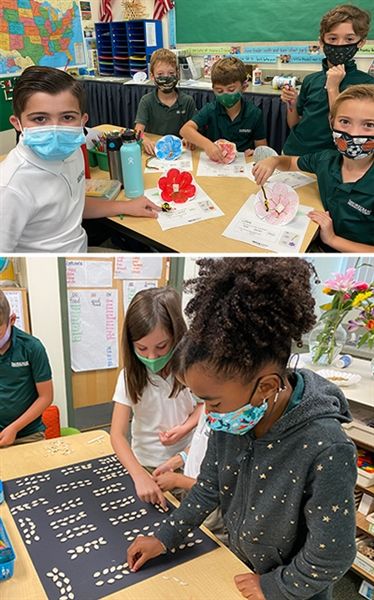

Experiential Learning in Second Grade
Source/Author: Second Grade Team
November 03, 2021
Many schools want to be known for engaging in “Hands-on Learning,” but what does that actually mean and why is it so important? Many think of it as learning by doing. Educational researchers agree that hands-on learning is very well suited for kinesthetic learners who prefer physical activity to learn new information. Teachers agree that it leads to increased retention of material and helps to develop problem-solving skills. Scientists have shown that it activates more areas of the brain than a single activity or only listening to information being presented. Many parents wish that schools they attended taught this way, as they see the value. Perhaps most importantly, Shorecrest students who regularly have these classroom experiences just think of it as a fun way they learn at school.
Throughout October, Shorecrest second graders had many math and science experiences that were connected to real life learning, all in very hands-on (and sometimes feet) ways. During their Plants and Pollinators investigation, which has a measurement component, students learned through the following experiential activities:
- Measured their classmates’ feet to make “beds” of different lengths, which demonstrated why it’s important to have standard units of measurement.
- Created their own rulers to help understand inches and centimeters more deeply.
- Planted banana trees in Shorecrest’s garden and tended to the herbs and vegetables that they had already planted.
- Estimated how many seeds were in pumpkins before weighing, measuring, scooping, counting, and tasting the seeds.
- Created flowers and practiced “pollinating” them by making bees that carried pollen from one flower to another.
- Observed flowers using their senses, and dissected them to discover each part of the flower.
Second grade bee and pollinator representations will be shared soon. They are BEE-ing created throughout the weeks of November. You won’t BEE disappointed!
Find more photos from pumpkins and pollinators here.
Find more photos from pumpkins and pollinators here.
























